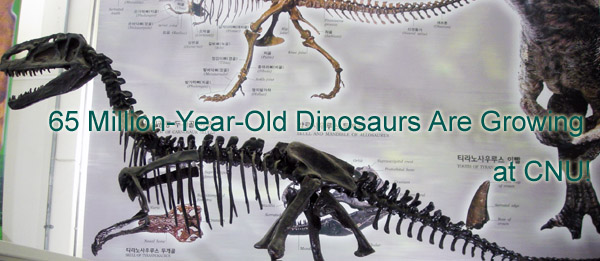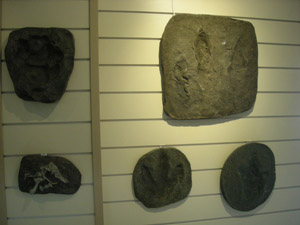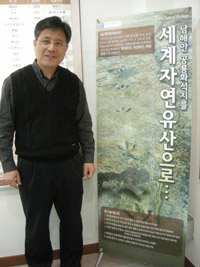전남대학교 공룡연구소

Have you ever been interested in dinosaurs? You may imagine a baby dinosaur “Dooly” which is a popular animation character in
On Ju0ne 7, 1999, CNU established the Dinosaur Study Institute for the first time in
Inside of the KDRC

For a UNESCO World Heritage!
A great number of dinosaur fossils have been found all over the world, but the Korean south coast including Haenam, Hwasun, Yeosu, Goeseong and Boseong is an internationally recognized area of fossilized dinosaur footprints due to the abundance and diversity of the fossils. It is said that the density of fossil distribution of the site is the highest in the world. Especially well-preserved dinosaur fossils with its original shapes excavated in Boseong are estimated as a significant clue to unveil what species of dinosaurs lived in the Korean Peninusula during the Cretaceous period. Consequently, the site of dinosaus’ fossilized footprints on the south coast is very valuable and worthy of being a UNESCO World Heritage Site.
How was your short trip to the KDRC? Are dinosaurs more familiar to you than before? The KDRC researchers have revived dinosaurs that died about 65 millions years ago. Dinosaurs live on our campus and we can meet them anytime we want to. Quite fantastic! Whenever you feel bored because of your daily routine on campus, just visit the center with your friends. It surely refreshes you and brings you to the ancient time when dinosaurs were roaming. Now the KDRC is conducting a campaign to seek signatures for the south coast’s dinosaur fossil footprint site being inscribed on the World Heritage List. Our signatures have the possibility to affect an actual on-the-spot inspection by the International Union for the Conservation of Nature and Natural Resources (IUCN) this August and ultimately the World Heritage Committee’s determination next year. We should join in the effort for the registration on the list. If you visit the center, please sign there. Do not miss it!
<Professor Huh>

The Korean peninsula has good conditions to study on dinosaur ecology, how dinosaurs disappeared on Earth because there are a lot of remains, like dinosaurs’ fossils, footprints and eggs. So we researchers have studied past times and prepared for our future at the same time. Last January KDRC applied the dinosaurs’ fossilized footprints area on the south coast for a UNESCO World Heritage Site to the
Huh Min, Director of the KDRC said, “The inscription of the area on the World Heritage List will be a milestone of the center and CNU. It means that CNU will become famous and the center becomes a vital institute for the study on dinosaur ecology during the Cretaceous period and the study of the Earth’s structure and geology. The news media of the world will report our country to all the people on Earth. It is expected that the number of international tourists to our country will grow in the future, and further lead to improving the national image of

